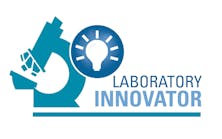The increasing prevalence of sexually transmitted infections (STIs) globally is of major concern, both in developed and developing countries. STIs can be difficult to diagnose because of atypical or asymptomatic presentation, and left untreated can result in infected individuals acting as reservoirs for future infection. Detection and monitoring of STIs are essential for infection control, but conventional diagnostic tests can be prohibitively complex or expensive, particularly when looking for many infectious agents. It is clear that a more efficient process for detecting many of the most prevalent STIs is required.
STIs: the challenges they pose
Sexually transmitted infections, when left untreated, can cause a multitude of health problems including infertility in both men and women. STIs can also increase the risk of acquiring HIV by up to three times. STIs can be passed from mother to unborn baby, resulting in severe birth defects. With such serious consequences, it is clear that screening and accurate diagnosis of STIs are essential.
Infections that present symptoms are often diagnosed earlier, when they are more easily treated. Asymptomatic infections are of great concern, as infected individuals unaware of their condition increase the risk both of spread and more serious complications.
More than one sexually transmitted infection can co-exist. Although one may manifest itself via visible symptoms, the secondary infection may show no symptoms at all. This causes problems when one is treated but the other is not diagnosed and remains in the body. This highlights the importance of having a multiplexing testing platform that would be capable of detecting more than one infection at the same time.
Another concern regarding the control of STIs is the build-up of resistance to antibiotics. For example, Neisseria gonorrhea (NG) has become more resistant to antibiotics over recent years, thereby reducing treatment options. This is a potential problem for other STIs in the future. The inability to detect whether an infection is viral or bacterial can result in the prescription of ineffective antibiotics, thus increasing resistance. A testing method which is able to detect both viral and bacterial infections would be of great benefit as it would allow clinicians to prescribe appropriate treatment and reduce antibiotic resistance.
In a number of countries, national screening programs are in place for Chlamydia trachomatis (CT), and in some this has been extended to include NG as a duplex screen. This has proven to be very effective in diagnosing and treating infected individuals with these infections, but it fails to address the many other infective agents which can be transmitted through sexual contact. For example, other bacterial infections may share symptoms similar to CT and NG, but not be identified or correctly treated without a broader screening regime. Viruses such as herpes I and II should also be included in any comprehensive screen, as should asymptomatic agents that have implications in fertility and child-bearing.
There is now growing support for a more complete diagnostic tool for STIs which encompasses multiple bacterial and viral targets. In addition, a protozoa, Trichomonas vaginalis (TV), is also worth including on a test panel. A more complete STI testing panel may have the following composition: Chlamydia trachomatis; Neisseria gonorrhea; TV; Treponema pallidum (syphilis); Herpes simplex I; Herpes simplex II; Mycoplasma hominis; Mycoplasma genitalium; Ureaplasma urealyticum; and Haemophilus ducreyi.
MDx and multiplex testing: an emerging response
New technology, particularly molecular diagnostics, has altered the way we diagnose and treat patients. The prevalence of multiplex testing has also grown exponentially and is an integral part of the molecular revolution. Multiplexing yields more information from a single patient sample, providing the clinician with a more complete profile, enabling a more conclusive diagnosis. Combining molecular diagnostics and multiplex testing can result in improvement in efficiency and cost effectiveness.
Single-test assays are gradually being replaced by multi-analyte reactions that can simultaneously measure levels of a suite of specific biomarkers (protein, DNA, RNA). In many cases, such tests do not require additional reagents or sample volume, so they have benefits in all aspects of the procedure, including patient comfort, ease of use, and cost. With the advent of versatile platforms and assay procedures, rapidly customizable arrays are possible.
Multiplexing can benefit healthcare globally. Running multiplex assays within clinical settings can provide significant cost benefits and result in more efficient treatment. Time from presentation to treatment is shortened, resulting in improved patient care.
Moreover, implementation of multiplex testing within STI screening aids the worldwide effort to reduce the spread of STIs. It addresses the issue of co-infection and asymptomatic infections remaining undiagnosed. Because multiple diseases are tested for in the same sample, all present STIs are detected whether or not they present symptoms. This allows the clinician to decide on a course of treatment that will fight more than one infection.
Multiplex testing of sexually transmitted infections can also aid more specific antibiotic usage. By using a multiplexing platform that identifies specific viral, protozoan, and bacterial pathogens, targeted therapy will be permitted. Appropriate treatment will reduce the build-up of antibiotic resistance.
A multiplexing STI assay which utilizes a simple procedure can be easily implemented in any laboratory. Such a testing platform should be highly specific and sensitive, with a rapid turnaround time. With the continual leaps forward in technology and research within diagnostics, we are better equipped than ever to revolutionize testing for sexually transmitted infections.
Martin Crockard, PhD, Molecular Diagnostics Manager for Randox Laboratories, leads a team of 15 molecular biologists in the company’s Molecular group and has more than 18 years experience leading molecular biology projects, 12 at Randox. Dr. Crockard works closely with the company’s engineering, regulatory affairs, marketing, and manufacturing departments to develop both multiplex arrays and complementary analyzers.





